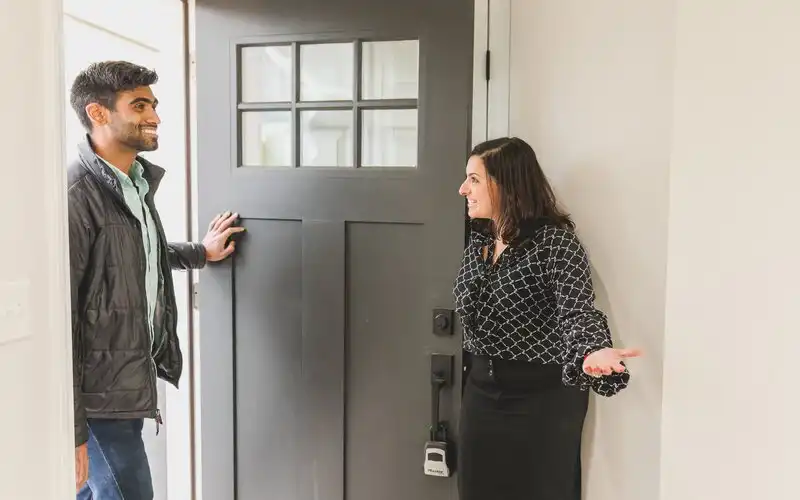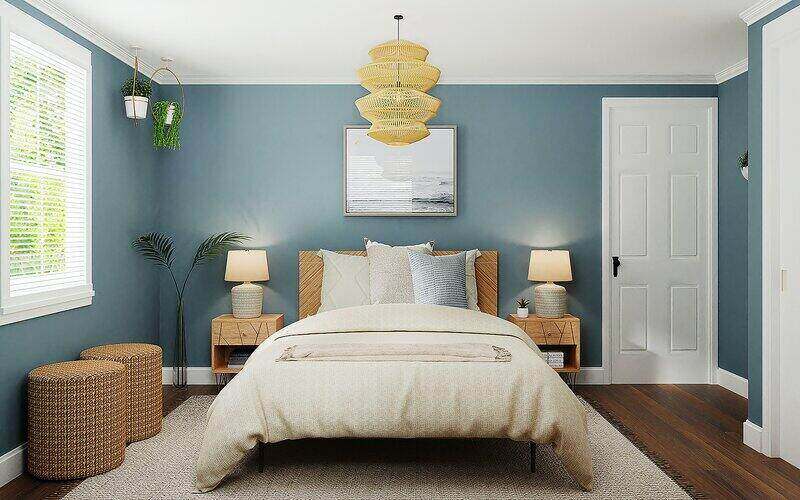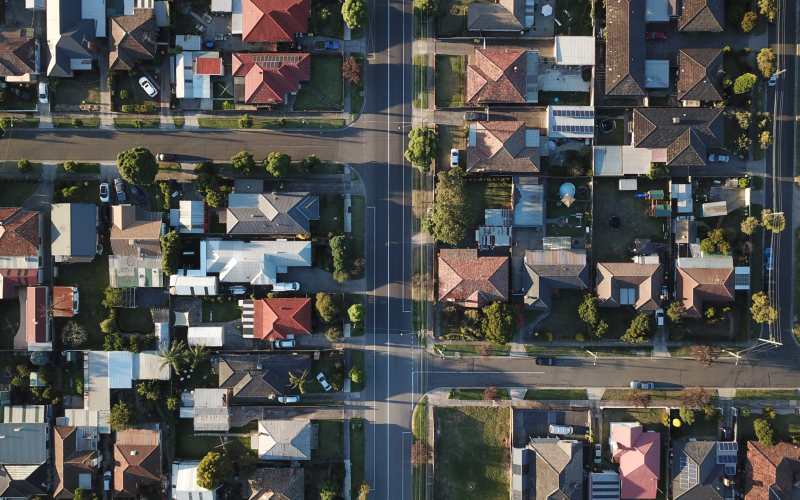Existing as part of the Australian Government Home Guarantee Scheme, the First Home Guarantee is designed to support eligible first home buyers into the property market.
Here you’ll find more about the First Home Guarantee including property price caps and the requirements needed for first home buyers to take part in the scheme.
What is the First Home Guarantee?
The First Home Guarantee (FHBG) is an Australian Government incentive for first home buyers looking to purchase their first home. The scheme offers first home buyers the ability to purchase a home with a deposit as low as 5%, without the need to pay Lenders’ Mortgage Insurance (LMI). This means you can borrow up to 95% of the property value, with the federal government providing the lender with a guarantee of up to 15% of the property’s value.
The FHBG exists alongside the Regional First Home Buyer Guarantee and the Family Home Guarantee.
The FHBG is administered by Housing Australia (formerly the National Housing Finance and Investment Corporation) on behalf of the Australian Government, offering 35,000 places for Aussies across the country each financial year until 30 June, 2025.
First Home Guarantee eligible properties
Under the FHBG, a property must be considered a residential property to be considered eligible. Eligible residential properties for the scheme include:
-
An existing house, townhouse, or apartment.
-
A house and land package .
-
Land and a separate contract to build a home.
-
An off-the-plan apartment or townhouse.
First Home Guarantee price caps
For first home buyers looking to take advantage of the scheme, there are specific price caps on the property you can purchase. Ultimately the cap depends on which state or territory you live in and the area within each. The table below shows just how much you can spend on a first home to be eligible to receive the FHBG.
To find the property price cap for a particular suburb or location that you are looking to call home, you can take advantage of the Housing Australia suburb postcode search engine.
|
Area |
Property Price Cap |
|---|---|
|
New South Wales – capital city and regional centre |
$900,000 |
|
New South Wales – other |
$750,000 |
|
Victoria – capital city and regional centre |
$800,000 |
|
Victoria – other |
$650,000 |
|
Queensland – capital city and regional centre |
$700,000 |
|
Queensland – other |
$550,000 |
|
Western Australia – capital city |
$600,000 |
|
Western Australia – other |
$450,000 |
|
South Australia – capital city |
$600,000 |
|
South Australia – other |
$450,000 |
|
Tasmania – capital city |
$600,000 |
|
Tasmania – other |
$450,000 |
|
Australian Capital Territory |
$750,000 |
|
Northern Territory |
$600,000 |
|
Jervis Bay Territory and Norfolk Island |
$550,000 |
|
Christmas Island and Cocos (Keeling) Islands |
$400,000 |
First Home Guarantee eligibility
To qualify for the federal government scheme, applicants must meet the following conditions:
-
All applicants must be first home buyers or must not have owned property in Australia – whether as an investment or owner occupied – for at least 10 years prior.
-
Individual applicants must have earned less than $125,000 and those making joint applications must have earned under $200,000 in the last financial year.
-
Any two people buying a home together can jointly apply for the scheme. Prior to 1 July, those jointly applying had to be married or in a de-facto relationship.
-
All applicants must be at least 18 years of age.
-
All applicants must be Australian citizens or permanent residents.
-
Applicants must be intending to live in the property they’re purchasing.
-
Applicants must have a deposit of between 5% and 20% of the property’s value.
-
Your purchased property must be an acceptable property type and within the property price threshold for the suburb and postcode.
To be eligible for the FHBG, the contract of sale and (if applicable) eligible building contract may have specific dates for when they can be signed by the home buyer. There are no exceptions to these required dates.
Before taking up the scheme, first home buyers should discuss their individual financial circumstances with a participating lender.
Participating lenders
-
Commonwealth Bank
-
NAB
-
Westpac
- BankSA
- Bank of Melbourne
- St George
-
RAMS
-
Australian Military Bank
-
Australian Mutual Bank
-
Auswide Bank
-
Bank Australia
-
Bank First
-
Bank of Heritage Isle
-
Bank of Us
-
bcu
-
Bendigo Bank
-
Beyond Bank Australia
-
Border Bank
-
Community First Credit Union
-
Credit Union SA
-
Defence Bank
-
Firefighters Mutual Bank
-
G&C Mutual Bank
-
Gateway Bank
-
Great Southern Bank
-
Health Professionals Bank
-
Indigenous Business Australia
-
Illawarra Credit Union
-
IMB Bank
-
Mortgageport
-
Newcastle Permanent Building Society
-
P&N Bank
-
People First Bank (formerly People's Choice, renamed following its merger with Heritage Bank)
-
Police Bank
-
QBANK
-
Queensland Country Bank
-
Regional Australia Bank
-
Teachers Mutual Bank
-
The Mutual Bank
-
UniBank
-
Unity Bank Limited
-
WAW
Pros and cons of the First Home Guarantee
Pros
LMI savings
To avoid paying LMI you typically need to have a 20% deposit. If your deposit is less, LMI generally applies.
Avoiding LMI can save some buyers tens of thousands of dollars. For example, according to Savings.com.au’s LMI Calculator, a first home buyer purchasing a $700,000 property with a 5% deposit could pay more than $36,000 for LMI.
A key drawcard of the FHBG is that you avoid paying LMI. This is thanks to the federal government stepping in and providing a guarantee of up to 15% of the purchase price.
Purchase sooner
For first home buyers, saving for a 20% deposit can take longer than a decade. Entering the property market with a deposit of just 5% can mean you are able to purchase a property sooner.
Cons
Higher interest costs
A 5% deposit means you will need to borrow more to achieve your first home goals, which in turn means your total interest bill could end up costing you more over the life of the loan.
Property price falls
If property prices fall you could find yourself in a situation of owing more than you own. This becomes a problem if you have to sell. But, if you are able to hold onto your property over the long term, you should be able to ride out the waves of uncertainty that come with the property market.
Advertisement
Buying a home or looking to refinance? The table below features home loans with some of the lowest interest rates on the market for owner occupiers.
| Lender | Home Loan | Interest Rate | Comparison Rate* | Monthly Repayment | Repayment type | Rate Type | Offset | Redraw | Ongoing Fees | Upfront Fees | LVR | Lump Sum Repayment | Additional Repayments | Split Loan Option | Tags | Features | Link | Compare |
|---|---|---|---|---|---|---|---|---|---|---|---|---|---|---|---|---|---|---|
6.04% p.a. | 6.06% p.a. | $2,408 | Principal & Interest | Variable | $0 | $530 | 90% | Featured 4.6 Star Customer Ratings |
| |||||||||
5.99% p.a. | 5.90% p.a. | $2,396 | Principal & Interest | Variable | $0 | $0 | 80% | Featured Apply In Minutes |
| |||||||||
6.09% p.a. | 6.11% p.a. | $2,421 | Principal & Interest | Variable | $0 | $250 | 60% | Featured Unlimited Redraws |
|
Image by Rodnae Productions via Unsplash

Ready, Set, Buy!
Learn everything you need to know about buying property – from choosing the right property and home loan, to the purchasing process, tips to save money and more!
With bonus Q&A sheet and Crossword!







 Emma Duffy
Emma Duffy
 Harrison Astbury
Harrison Astbury
 Rachel Horan
Rachel Horan



